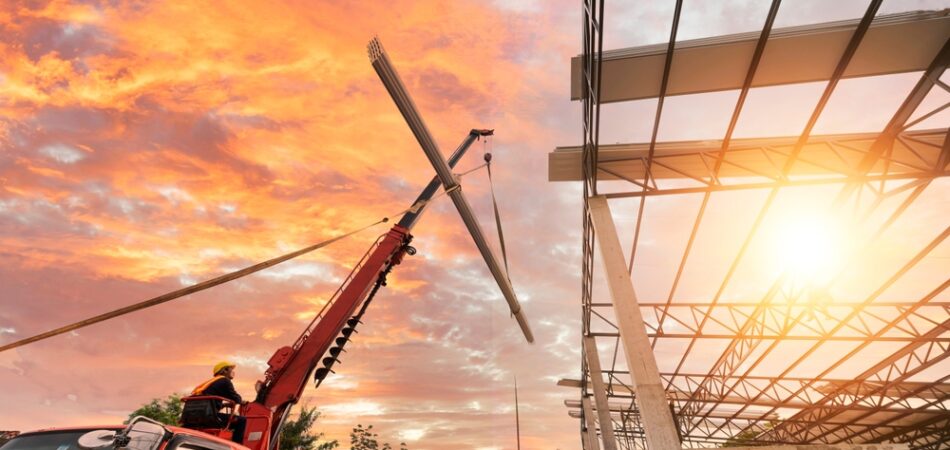
Cranes are essential pieces of equipment in the construction industry, serving to lift and move heavy materials and equipment with precision and efficiency. From towering skyscrapers to infrastructure projects, cranes play a crucial role in the construction of buildings, bridges, and other structures. In this article, we’ll explore the most common types of cranes used in construction and their unique features and applications.
Tower Cranes
Tower cranes are perhaps the most iconic and recognizable cranes on construction sites worldwide. These tall, slender structures feature a vertical mast and a horizontal jib with a movable trolley that carries the lifting mechanism, known as the hook or load line. Tower cranes are typically anchored to the ground and rise hundreds of feet into the air, making them ideal for lifting heavy materials to great heights, such as steel beams, concrete panels, and prefabricated modules. Their versatility, high lifting capacity, and ability to operate in confined spaces make tower cranes indispensable for erecting tall buildings and skyscrapers.
Mobile Cranes
Mobile cranes are versatile, self-propelled machines equipped with telescopic or lattice booms that can be extended or retracted to reach various heights and distances. These cranes are mounted on wheeled or tracked chassis, allowing them to be easily maneuvered around construction sites and transported between locations. Mobile cranes come in a variety of configurations, including truck-mounted cranes, rough-terrain cranes, and all-terrain cranes, each tailored to specific terrain and lifting requirements. Mobile cranes are commonly used for tasks such as lifting heavy machinery, placing building materials, and assembling structural components in diverse construction settings.
Crawler Cranes
Crawler cranes are powerful, heavy-duty cranes mounted on a set of tracked undercarriages, or crawlers, that provide stability and mobility on rough or uneven terrain. Unlike mobile cranes, which rely on wheels for propulsion, crawler cranes use tracks to navigate through soft or muddy ground conditions, making them ideal for construction sites with challenging terrain. Crawler cranes are known for their impressive lifting capacity and reach, making them well-suited for heavy lifting tasks such as erecting steel structures, installing bridge components, and handling oversized loads in industrial settings.
Overhead Cranes
Overhead cranes, also known as bridge cranes or gantry cranes, are fixed to an overhead beam or runway system that spans the length of a building or structure. These cranes feature a horizontal bridge that travels along the runway on rails or tracks, with a hoist and trolley mechanism suspended from the bridge for lifting and moving loads horizontally and vertically. Overhead cranes are commonly used in manufacturing facilities, warehouses, and assembly lines to transport materials, machinery, and finished products with precision and efficiency. Their ability to cover large areas and handle heavy loads makes them indispensable for industrial applications where space is limited.
Jib Cranes
Jib cranes are compact, lightweight cranes characterized by a horizontal jib or boom that extends from a vertical mast or wall-mounted bracket. These versatile cranes are designed for lifting and maneuvering loads within a limited radius, making them ideal for confined spaces or areas with obstacles. Jib cranes come in various configurations, including wall-mounted jib cranes, floor-mounted jib cranes, and portable jib cranes, each offering unique advantages depending on the application. Jib cranes are commonly used for tasks such as loading and unloading trucks, handling materials in workshops, and assisting with assembly and maintenance operations.
Choosing the Right Crane for Your Construction Needs
In the dynamic world of construction, selecting the right crane for the job is essential for ensuring safety, efficiency, and productivity on the worksite. Whether it’s towering tower cranes for erecting skyscrapers, versatile mobile cranes for maneuvering in tight spaces, or heavy-duty crawler cranes for tackling rugged terrain, each type of crane offers unique capabilities and advantages to meet the diverse needs of construction projects. By understanding the characteristics and applications of the most common types of cranes, construction professionals can make informed decisions when selecting equipment and optimizing workflows to achieve project success.
Need a Crane Inspector in Chandler, AZ?
American Inspection and Test, Inc. is a family owned and operated crane and aerial lift inspection service with 20 years of experience. Our mission is to elevate safety through a higher quality of certified inspectors and have a better standard testing and inspection procedures overall. We are known for our high standards and work ethic and have been recognized by multiple national, federal, state and city agencies. Increase safety and lower maintenance costs by calling us today.
